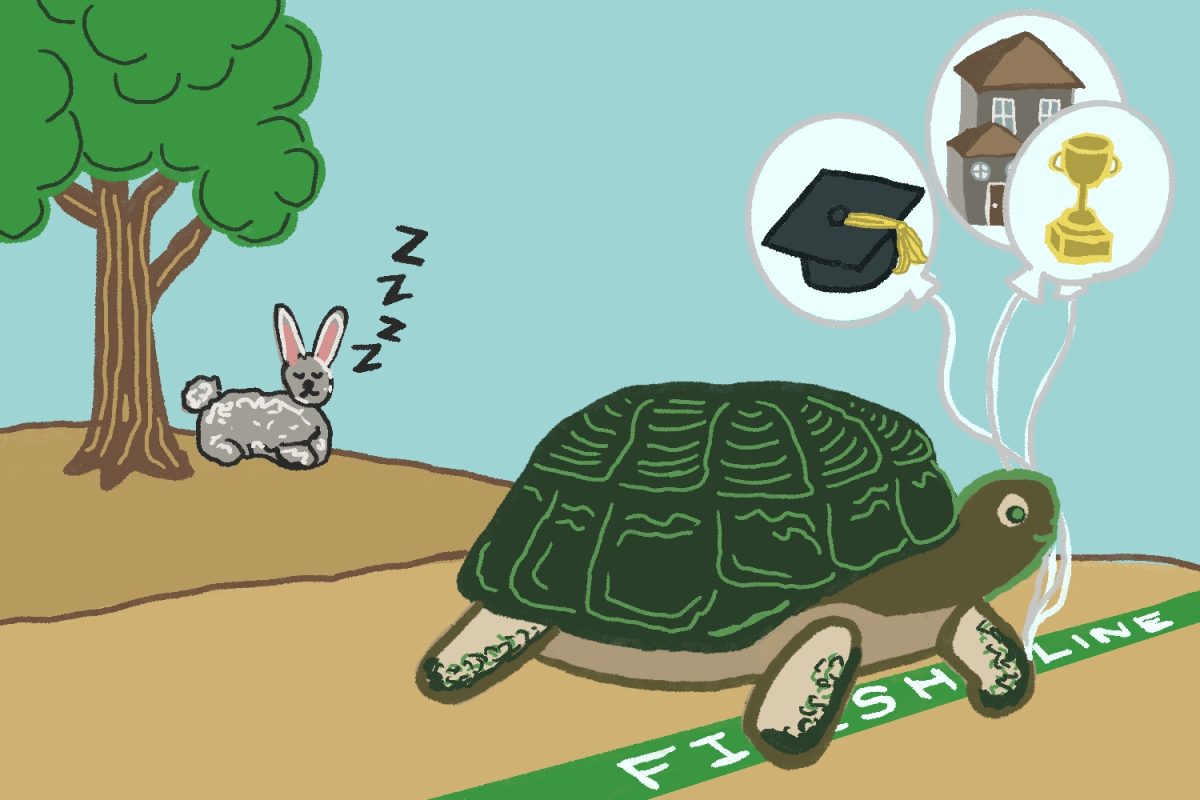The Kyrene School District in Chandler, Ariz. has recently been the subject of media buzz and controversy over its heavy focus on technology as a means of learning in the classroom.
If one were to walk down the halls looking in classroom windows, one would see every single student huddled over a laptop complete with interactive software to take them through each subject at their own pace. In these classrooms, the teacher is less of a leader and more of a guide, going around to individual students as needed while they themselves are engrossed in the computer software. According to The New York Times, the school has invested about $33 million in new technology since 2005.
While new technology is a helpful aid in classroom learning, it should be used as a supplement rather than the main method of teaching. The Kyrene School District’s test scores in reading and math have stagnated since the introduction of the new technology, even while scores in districts around them have steadily risen.
The test scores alone speak to the fact that classrooms, especially with young students, need to incorporate a significant amount of social activity into the learning experience, because the development of social skills is just as necessary to a student’s success as book learning.
In addition, many students learn better with more hands-on methods that involve movement or physical writing. On top of that, numerous studies over the years have shown that sitting in front of a computer for prolonged amounts of time is unhealthy. If technology-centric classrooms become the norm, it could promote an overuse and over-reliance on technology and a decrease in physical activity outside the classroom.
This technologically advanced, Silicon Valley-powered mantra of “new is always better” might actually be doing more harm than good when it comes to education. Even with the current economic climate, schools are choosing to spend money on new laptops and Smart Boards while simultaneously laying off teachers and cutting funds for physical education, music and art programs.
Throwing money and new resources at the problem isn’t going create a quick fix out of thin air. American education is not in need of an infusion of new technology, but rather an allocation of funds directed towards infrastructural overhaul, better teachers and adequate facilities.
Giving a classroom full of under-performers iPads is not going to magically make them better at math. Maybe it would help, but there are other, less expensive methods that school districts should push for first.

















































































































Mitzi Eptein • Sep 6, 2011 at 8:44 pm
Dear Editors,
My son was graduated from BU, SMG in May 2010.
Your editorial is making me doubt my investment in BU.
Have you ever “Walked down the halls” in a Kyrene school? I guess you have not.
Kyrene has won national acclaim because they are using the investment in technology efficiently. They have NOT bought 1 computer per student. The research into what works in classrooms shows that it’s best to let students work in small groups. (Much like it’s done in SMG and businesses around the world.) Some groups have 1 device per student, and other groups have paper or other materials. The district has bought about 5 laptops per classroom. When everybody in class needs a laptop, they share across classrooms.
Kyrene has already invested very frugally and effectively in teacher professional development and adequate faciities. To get the next step up in reaching every child, and to help every child prepare to be a lifelong learner, carefully chosen technological tools have been enmeshed into the — also highly acclaimed — curriculum.
While you are correct in your generalizations –Throwing money at new resources wil not solve problems — your specific conclusions about Kyrene Are NOT Based On Facts.
Another responder to the NYT article got the headline right, “In the classroom of the future, current tests cannot keep up.” Meaning that NCLB tests that measure only reading and math are missing the lion’s share of skills needed in the world today.
Kyrene’s investment in technology has saved the district money, and more importantly, has prepared student for the 21st Century.